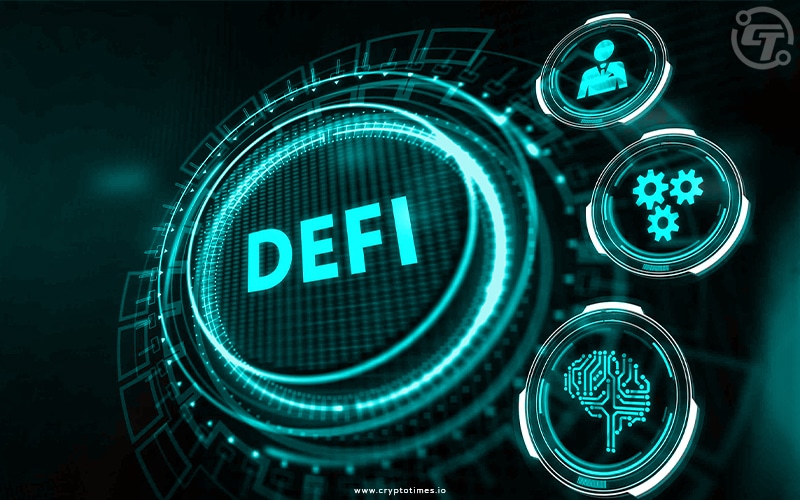Introduction to Decentralized Finance (DeFi)
The financial landscape is evolving at an unprecedented pace. Enter Decentralized Finance, or DeFi—a groundbreaking movement that challenges the very foundations of traditional banking and finance systems. Imagine a world where your financial transactions are conducted without intermediaries, where access to financial services is democratized, and where innovation reigns supreme. This new paradigm leverages blockchain technology to create transparent, secure, and accessible platforms for everyone.
DeFi opens up a universe brimming with opportunities, enabling individuals to lend, borrow, trade, and invest in ways previously thought impossible. As we delve deeper into this fascinating realm of decentralized finance, you’ll discover not only its advantages but also the exciting projects driving its growth—and some hurdles it must overcome along the way. Buckle up as we navigate through this captivating evolution in how money moves!
The Advantages of DeFi over Traditional Finance

Decentralized Finance (DeFi) offers numerous advantages that set it apart from traditional finance. First and foremost, DeFi operates without intermediaries. This means users can engage directly with financial services, eliminating banks and brokers.
Lower costs are another significant benefit. Transactions on DeFi platforms often come with reduced fees compared to their centralized counterparts. Users save money while enjoying faster transactions.
Accessibility is a game-changer in the DeFi space. Anyone with an internet connection can participate, regardless of geographic location or economic status. This inclusivity empowers millions who previously lacked access to conventional banking systems.
Additionally, transparency reigns supreme in DeFi ecosystems. All transactions are recorded on public blockchains, allowing anyone to verify activities easily. This openness builds trust among participants and fosters accountability within the system.
Innovation thrives in decentralized environments as developers continuously create new products tailored to user needs—something traditional finance struggles to keep up with.
Popular DeFi Platforms and Projects

The DeFi landscape is bustling with innovation. Numerous platforms have emerged, each offering unique features and services.
Uniswap stands out as a decentralized exchange (DEX). It allows users to swap various cryptocurrencies without intermediaries. The automated market-making model sets it apart from traditional exchanges.
Another notable project is Aave, a lending platform that enables users to borrow and lend assets efficiently. With its innovative flash loans, anyone can access liquidity instantly for short-term needs.
Yearn.finance transforms yield farming by optimizing investment strategies for users. Its vaults automatically move funds across different protocols to maximize returns.
SushiSwap offers more than just trading; it provides staking options and community governance through its native token, SUSHI. This empowers users while enhancing the platform’s functionality.
These projects illustrate the diverse possibilities within DeFi, making finance accessible and engaging for everyone involved.
Challenges and Risks of DeFi
Decentralized Finance (DeFi) presents an exciting frontier, but it’s not without its challenges. Security concerns loom large as the ecosystem is often targeted by hackers and malicious attacks. Smart contracts, while innovative, can have vulnerabilities that lead to significant financial losses.
Another pressing issue is regulatory uncertainty. Governments worldwide are still figuring out how to approach DeFi platforms. This creates a risk for users who may find themselves in legal gray areas.
Liquidity issues can also arise during market volatility, making it difficult to execute trades or withdraw funds when needed most.
User experience remains a barrier too; many platforms require technical knowledge that could intimidate newcomers. As DeFi continues to evolve, these risks must be addressed for broader adoption and trust in this transformative sector of finance.
The Future of Decentralized Finance
The future of decentralized finance is brimming with potential. As blockchain technology evolves, we can expect innovation that transforms how we think about money and transactions.
New protocols will emerge, offering enhanced security and efficiency. These advancements may lead to greater accessibility for individuals worldwide.
As regulatory frameworks develop, they could foster trust in DeFi platforms while preserving their core principles of transparency and autonomy. This balance might attract mainstream users who are currently hesitant.
Moreover, interoperability between various DeFi projects could streamline processes, allowing seamless asset transfers across different platforms. Imagine a world where you can easily switch assets without worrying about complex exchanges.
User experience will likely improve as well. Simplified interfaces and educational resources can empower more people to participate in this financial revolution. The vision of democratized finance is becoming clearer each day; the possibilities seem endless.
How to Get Started with DeFi
Getting started with decentralized finance is simpler than you might think. First, you’ll need a cryptocurrency wallet that supports DeFi projects. Popular choices include MetaMask and Trust Wallet.
Next, acquire some Ethereum or other supported tokens. You can buy these on centralized exchanges like Coinbase or Binance before transferring them to your wallet.
Explore various DeFi platforms such as Uniswap for trading or Aave for lending and borrowing. Each platform has its unique features, so take the time to understand how they work.
Be cautious about gas fees when making transactions on the Ethereum network; they can fluctuate significantly based on demand.
Always do thorough research before investing in any project. The DeFi landscape is dynamic and full of opportunities waiting to be discovered by informed users.
Conclusion
As we explore the vibrant world of decentralized finance, it becomes clear that this movement is reshaping how individuals interact with money. The shift from traditional financial systems to a more open and inclusive model empowers users around the globe. With advantages like greater accessibility, transparency, and affordability, DeFi presents an attractive alternative for many.
However, it’s also essential to remain vigilant about the inherent risks and challenges that come with these new platforms. Understanding smart contracts, security vulnerabilities, and regulatory landscapes can be daunting but necessary for anyone looking to dive into Decentralized Finance.
With numerous innovative projects emerging daily in this space—ranging from lending protocols to decentralized exchanges—a wealth of opportunities awaits those willing to explore them.
Getting started with DeFi doesn’t have to be intimidating. By educating yourself on different platforms and their functionalities while practicing prudent investment strategies, you can navigate this evolving landscape effectively.
Embracing Decentralized Finance means stepping into a dynamic future where control is shifted back into the hands of individuals rather than centralized entities. As technology continues to evolve alongside growing interest in blockchain solutions, one thing remains certain: Decentralized Finance will play a crucial role in shaping our economic interactions moving forward.










